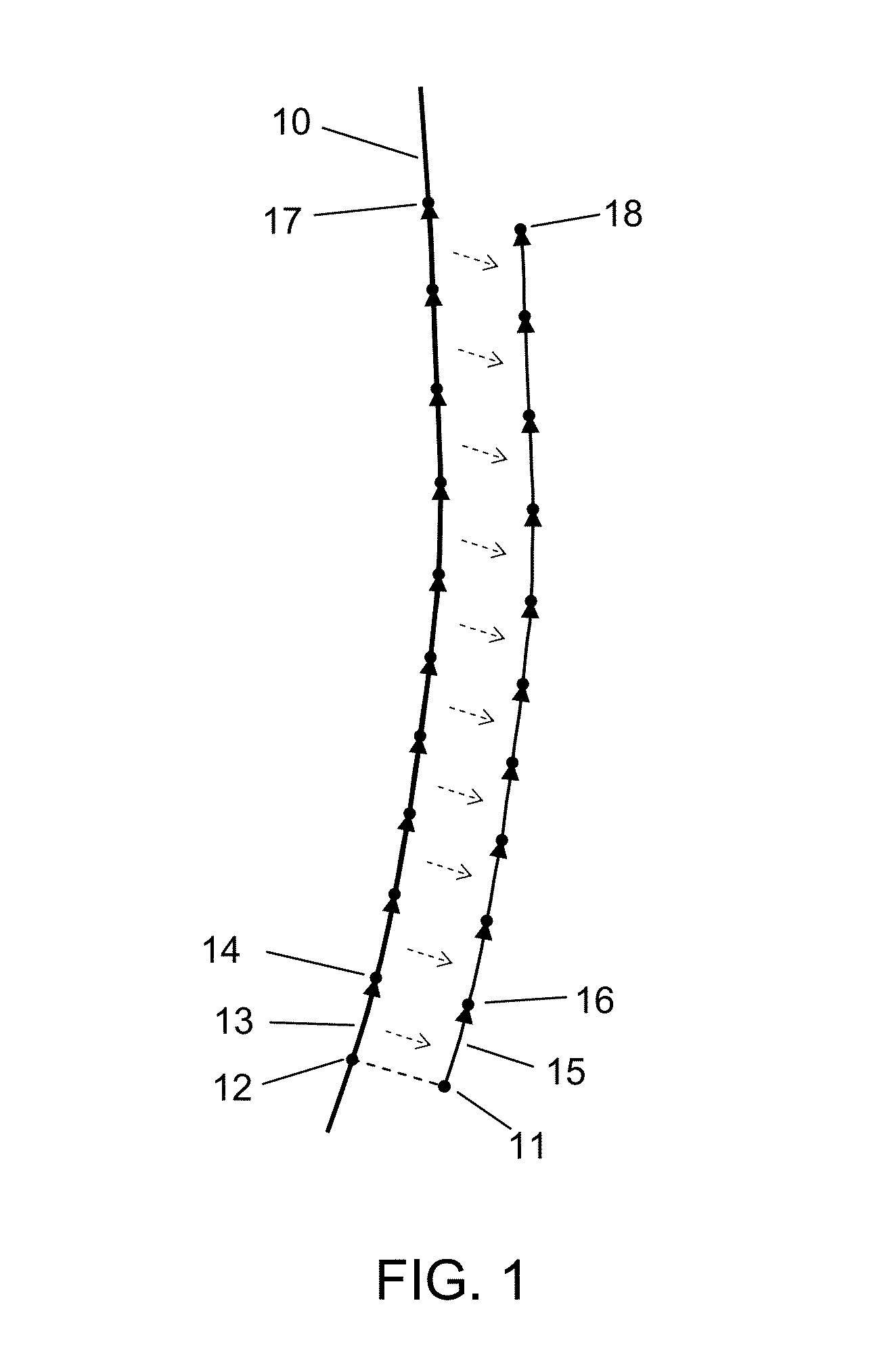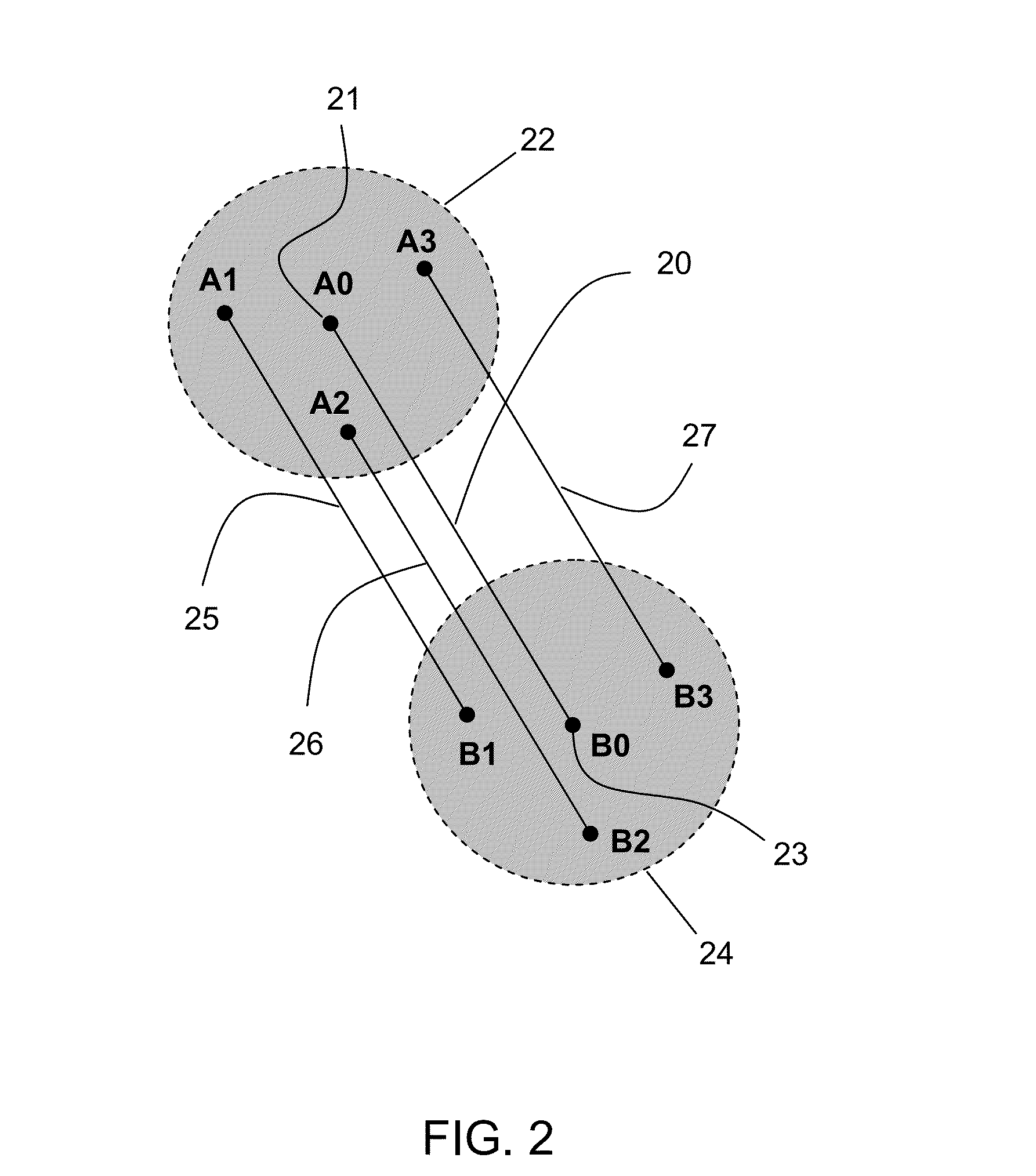Methods for road safety enhancement using mobile communication device
a mobile communication and road safety technology, applied in simultaneous traffic control systems, anti-theft devices, instruments, etc., can solve the problem of insignificant accumulation of positioning error in such short time, and achieve the effect of improving accuracy, facilitating road hazard determination, and sufficient accuracy
- Summary
- Abstract
- Description
- Claims
- Application Information
AI Technical Summary
Benefits of technology
Problems solved by technology
Method used
Image
Examples
Embodiment Construction
[0033]In accordance with the invention, principle of GPS-update-interval speed positioning is to use speed data of vehicle in conjunction with road path data of digital roadmap to calculate positions of vehicle between two consecutive GPS measurements. Fundamental of the principle is to, during GPS update interval, correlate vehicle movement along road path calculated by speed and very small time interval with available GPS measurement to determine location of vehicle in GPS coordinates or other geographic coordinates. For a GPS update interval, the speed positioning starts from an entry point on the road path that corresponds to an entry location. At beginning of GPS update interval, the entry location is latest GPS measured location. The entry point may be determined as the closest point on the road path to the GPS measured location because, due to limited positioning accuracy of GPS measurement, GPS location often falls close to by not right on the road path. Other sophisticated ...
PUM
 Login to View More
Login to View More Abstract
Description
Claims
Application Information
 Login to View More
Login to View More - R&D
- Intellectual Property
- Life Sciences
- Materials
- Tech Scout
- Unparalleled Data Quality
- Higher Quality Content
- 60% Fewer Hallucinations
Browse by: Latest US Patents, China's latest patents, Technical Efficacy Thesaurus, Application Domain, Technology Topic, Popular Technical Reports.
© 2025 PatSnap. All rights reserved.Legal|Privacy policy|Modern Slavery Act Transparency Statement|Sitemap|About US| Contact US: help@patsnap.com



